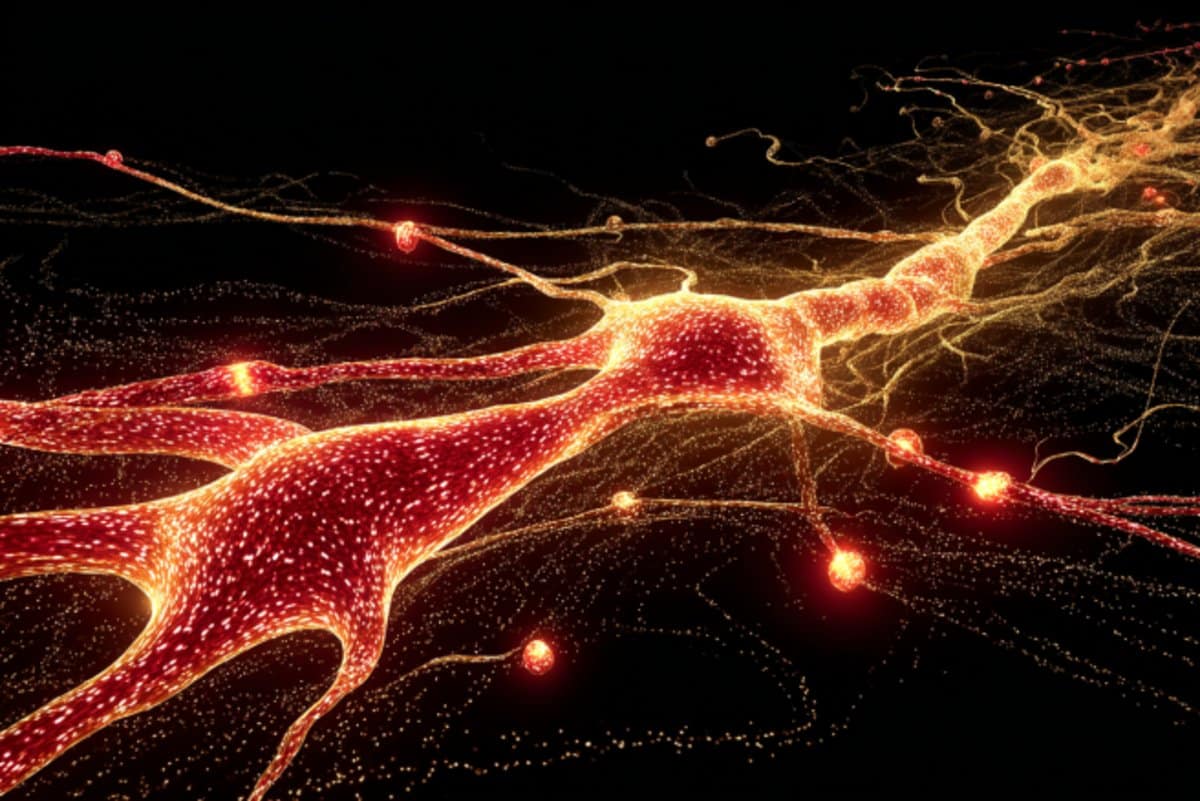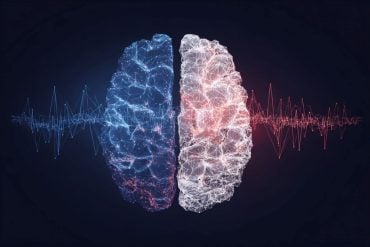Summary: Scientists have discovered that blood flow helps direct the movement of newly formed neurons in the adult brain, revealing a surprising link between circulation and brain cell migration. Using advanced imaging, researchers found that neurons travel faster along high-flow blood vessels, and that the hunger hormone ghrelin boosts this migration by activating movement within the cells.
Calorie restriction, which raises ghrelin levels, further accelerated neuron movement to the olfactory bulb—the brain’s smell center. The findings reveal how hunger-related signals and blood dynamics shape brain regeneration, offering clues for new treatments for stroke and neurodegenerative diseases.
Key Facts
- Flow-Driven Movement: Neurons migrate faster along blood vessels with higher blood flow.
- Hormonal Influence: Ghrelin, the hunger hormone, enhances neuron migration by triggering internal cell motion.
- Therapeutic Potential: Blood flow–based mechanisms could inspire new therapies for stroke and vascular dementia.
Source: eLife
Researchers have discovered how newly created neurons depend on blood flow in the adult brain to travel from their site of origin to their final location.
The study in mice, published today in eLife as the final Version of Record after appearing previously as a Reviewed Preprint, is described by the editors as fundamental.

They say it provides convincing evidence that new rostral migratory stream (RMS) neurons are closely situated alongside blood vessels and that their speed of travel through the brain relates to blood flow.
The study also suggests that the “hunger hormone” ghrelin, typically known for stimulating appetite, plays a role in the neurons’ migration speed.
The findings open avenues to explore unknown factors involved in blood flow-dependent cell migration, which could contribute to the development of novel therapies for neurological diseases.
When neurons are created in the brain, they travel – or migrate – from their site of origin to where they are needed. Several neuron and other cell types migrate along the blood vessels, raising the possibility that blood flow influences migration.
In this study, researchers looked at RMS neurons, which originate from the subventricular zone (SVZ) in the brain and migrate through the rostral migratory stream to the olfactory bulb – a region responsible for processing smells.
“Blood vessels have previously been shown to act as physical ‘scaffolds’ in the migratory routes of new neurons, but whether blood flow directly affects migration is still unknown,” says Takashi Ogino, Assistant Professor in the Department of Developmental and Regenerative Neurobiology, Nagoya City University Graduate School of Medical Sciences, Japan. Ogino is a co-first author of the study alongside Akari Saito, a graduate student in the same department.
Previous studies have revealed that SVZ-derived neurons migrate along blood vessels in the RMS and granule cell layer (GCL), but the interactions between the neurons and vessels along the entire migration route are less clear.
So, Ogino, Saito and colleagues began by studying blood vessel-guided neuronal migration in the RMS and olfactory bulb using 3D imaging in adult mice aged 6–12 weeks. This enabled them to analyse the spatial relationship between new neurons and blood vessels.
“These experiments confirmed that newborn neurons in the RMS, GCL and other regions frequently use blood vessels as migration scaffolds,” Ogino explains.
“Additionally, we saw close spatial relationships between the neurons and blood vessels, indicating that neurons migrate along the vessels for the entire route and that their movement may be influenced by blood flow.”
To examine this further, the team recorded the flow of new neurons and red blood cells using two-photon laser scanning microscopy. They found that the maximum migration speed was significantly higher for neurons migrating along high-flow vessels than for those in low-flow vessels, suggesting that migration is promoted in regions with abundant blood flow.
In further studies, the team focused on the hormone ghrelin, which can be delivered from the bloodstream to the olfactory bulb and other areas of the brain through vascular walls.
They applied fluorescently labelled ghrelin to the bloodstream in mice and saw that it accumulated in vascular endothelial cells – the cells that form the lining of blood-vessels – and parenchymal tissue in the RMS and olfactory bulb. This indicates that blood-derived ghrelin crosses the vascular wall into the functional tissue of the brain (brain parenchyma) and is delivered to new neurons.
They also noticed that ghrelin signalling promoted somal translocation – the process by which the cell body (soma) reaches out to bring the neuron to its final location – by activating the contraction of the actin cytoskeleton at the rear of the cell soma.
The team then examined whether calorie restriction, which has been reported to increase ghrelin levels in the blood, affects neuronal migration. They restricted the calorie intake of mice and found that this promoted the migration of olfactory bulb neurons.
“Together, these experiments suggest that blood flow promotes the migration of olfactory bulb neurons during hunger through ghrelin signalling, and this in turn increases the number of mature neurons in the olfactory bulb,” says co-first author Akari Saito.
“This could be a key mechanism that improves the olfactory function for sniffing out food when hungry.”
The authors add that neuronal migration may be influenced by blood flow under pathological conditions, as well as the conditions used in their study.
“It is possible that blood contains factors other than ghrelin that are beneficial to neuronal migration,” says senior author Kazunobu Sawamoto, Professor at the Department of Developmental and Regenerative Neurobiology, Nagoya City University Graduate School of Medical Sciences.
“More studies are therefore needed to identify these and other factors in the mechanism of blood flow-dependent cell migration. This could lead to the development of new blood flow-based therapies for neurological conditions such as stroke and vascular dementia.”
Key Questions Answered:
A: Neurons move faster along vessels with stronger blood flow, suggesting circulation directly supports their movement through the brain.
A: Ghrelin crosses from the bloodstream into brain tissue, where it activates neuron movement and helps guide cells to their destination.
A: It shows that hunger and blood flow work together to shape brain regeneration—potentially paving the way for treatments that enhance recovery after brain injury.
About this neuroscience research news
Author: Emily Packer
Source: eLife
Contact: Emily Packer – eLife
Image: The image is credited to Neuroscience News
Original Research: Open access.
“Neuronal migration depends on blood flow in the adult mammalian brain” by Takashi Ogino et al. eLife
Abstract
Neuronal migration depends on blood flow in the adult mammalian brain
In animal tissues, several cell types migrate along blood vessels, raising the possibility that blood flow influences cell migration.
Here, we show that blood flow promotes the migration of new olfactory-bulb neurons in the adult mammalian brain.
Neuronal migration is facilitated by blood flow, leading to accumulation of new neurons near blood vessels with abundant blood flow.
Blood flow inhibition attenuates blood vessel-guided neuronal migration, suggesting that blood contains factors beneficial to neuronal migration.
We found that ghrelin, which is increased in blood by hunger, directly influences neuronal migration.
Ghrelin signaling promotes somal translocation by activating actin cytoskeleton contraction at the rear of the cell soma.
New neurons mature in the olfactory bulb and contribute to the olfactory function for sensing odorants from food.
Finally, we show that neuronal migration is increased by calorie restriction, and that ghrelin signaling is involved in the process.
This study suggests that blood flow promotes neuronal migration through blood-derived ghrelin signaling in the adult brain, which could be one of the mechanisms that improves the olfactory function for food-seeking behavior during starvation.






